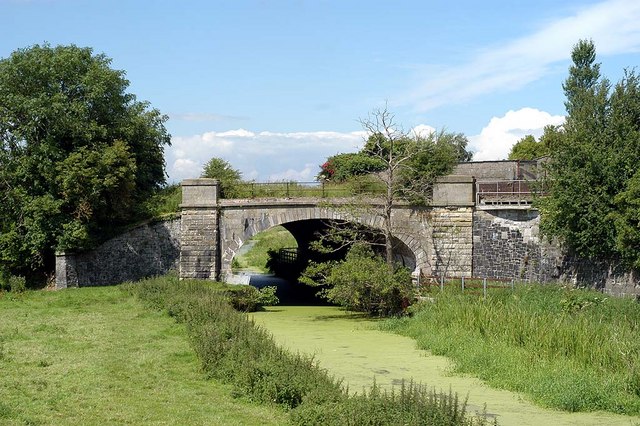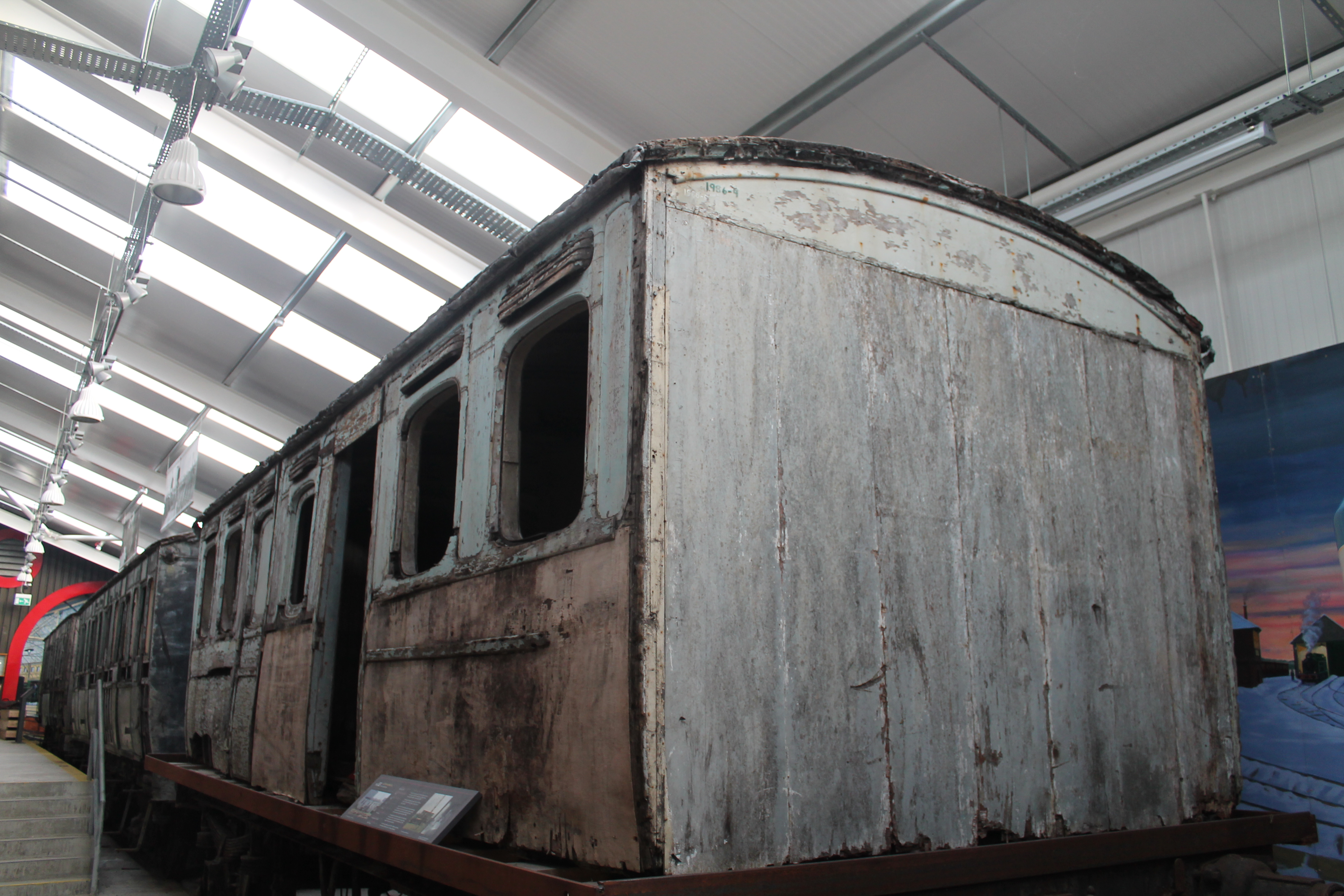Ulster Railway on:
[Wikipedia]
[Google]
[Amazon]
The Ulster Railway was a railway company operating in
 In 1836 a Railway Commission recommended that railways in Ireland be built to
In 1836 a Railway Commission recommended that railways in Ireland be built to
 One example of Ulster Railway rolling stock has survived. The body of No. 33, built as a family saloon in 1862 and withdrawn in the 1920s having passed into GNR hands, is preserved at the Downpatrick and County Down Railway. It is currently on display in the Carriage Gallery, and it is hoped that it will be fully restored in the future.
One example of Ulster Railway rolling stock has survived. The body of No. 33, built as a family saloon in 1862 and withdrawn in the 1920s having passed into GNR hands, is preserved at the Downpatrick and County Down Railway. It is currently on display in the Carriage Gallery, and it is hoped that it will be fully restored in the future.
Ulster
Ulster (; ga, Ulaidh or ''Cúige Uladh'' ; sco, label= Ulster Scots, Ulstèr or ''Ulster'') is one of the four traditional Irish provinces. It is made up of nine counties: six of these constitute Northern Ireland (a part of the United Kin ...
, Ireland
Ireland ( ; ga, Éire ; Ulster-Scots: ) is an island in the North Atlantic Ocean, in north-western Europe. It is separated from Great Britain to its east by the North Channel, the Irish Sea, and St George's Channel. Ireland is the s ...
. The company was incorporated in 1836 and merged with two other railway companies in 1876 to form the Great Northern Railway (Ireland)
The Great Northern Railway (Ireland) (GNR(I) or GNRI) was an Irish gauge () railway company in Ireland. It was formed in 1876 by a merger of the Irish North Western Railway (INW), Northern Railway of Ireland, and Ulster Railway. The governme ...
.
History
The Ulster Railway was authorised by an Act of theUK Parliament
The Parliament of the United Kingdom is the supreme legislative body of the United Kingdom, the Crown Dependencies and the British Overseas Territories. It meets at the Palace of Westminster, London. It alone possesses legislative suprem ...
in 1836 and construction began in March 1837.
The first of line, between and , were completed in August 1839 at a cost of £107,000. The line was extended in stages, opening to in 1841,Hajducki, 1974, map 9 in 1842,Hajducki, 1974, map 8 and in 1848.
 In 1836 a Railway Commission recommended that railways in Ireland be built to
In 1836 a Railway Commission recommended that railways in Ireland be built to broad gauge
A broad-gauge railway is a railway with a track gauge (the distance between the rails) broader than the used by standard-gauge railways.
Broad gauge of , commonly known as Russian gauge, is the dominant track gauge in former Soviet Union ( C ...
. The Ulster Railway complied with this recommendation but the Dublin and Drogheda Railway (D&D) did not. In order for Dublin and Belfast to be linked without a break-of-gauge
With railways, a break of gauge occurs where a line of one track gauge (the distance between the rails, or between the wheels of trains designed to run on those rails) meets a line of a different gauge. Trains and rolling stock generally cannot ...
, in 1846 the UK Parliament passed an Act adopting a compromise gauge of for Ireland, to which the Ulster Railway's track was then re-laid.
Extension of the Ulster Railway resumed, reaching in 1858, in 1862 and on the Dundalk and Enniskillen Railway, later the Irish North Western Railway (INW), in 1863.
The Dublin and Belfast Junction Railway (D&BJct) between and Portadown was completed in 1853. This connected the D&D with the Ulster Railway, thus completing the main line between Dublin
Dublin (; , or ) is the capital and largest city of Ireland. On a bay at the mouth of the River Liffey, it is in the province of Leinster, bordered on the south by the Dublin Mountains, a part of the Wicklow Mountains range. At the 2016 ...
and Belfast.
The Ulster Railway operated three lines that remained in the ownership of separate companies: the Portadown, Dungannon and Omagh Junction Railway
The Portadown, Dungannon and Omagh Junction Railway (PD&O) was an Irish gauge () railway in County Armagh and County Tyrone, Ulster, Ireland (now Northern Ireland).
Early development
Building of the PD&O line started from Portadown in 18 ...
(PD&O), the Banbridge, Lisburn and Belfast Railway
The Banbridge, Lisburn and Belfast Junction Railway was an Irish gauge () railway in Ireland linking Belfast with Banbridge, County Down. It was built in the 19th century. The line between Knockmore and Banbridge was closed in 1956.
History
The ...
(BLBR) and the Dublin and Antrim Junction Railway (D&AJR). The PD&O reached in 1858 and in 1861,Hajducki, 1974, map 7 and the contractor, William Dargan
William Dargan (28 February 1799 – 7 February 1867) was arguably the most important Irish engineer of the 19th century and certainly the most important figure in railway construction. Dargan designed and built Ireland's first railway lin ...
, sold the Ulster a 999-year lease on it in 1860. The BLBR opened between Knockmore Junction and Banbridge
Banbridge ( , ) is a town in County Down, Northern Ireland. It lies on the River Bann and the A1 road and is named after a bridge built over the River Bann in 1712. It is situated in the civil parish of Seapatrick and the historic barony of Iv ...
in 1863, and the D&AJR opened between Knockmore Junction and in 1871.Hajducki, 1974, map 5
In 1876 the Ulster Railway merged with the INW and the Northern Railway of Ireland (formed by a merger of the D&D and the D&BJct the previous year) to form the Great Northern Railway (Ireland)
The Great Northern Railway (Ireland) (GNR(I) or GNRI) was an Irish gauge () railway company in Ireland. It was formed in 1876 by a merger of the Irish North Western Railway (INW), Northern Railway of Ireland, and Ulster Railway. The governme ...
.
Preserved stock
 One example of Ulster Railway rolling stock has survived. The body of No. 33, built as a family saloon in 1862 and withdrawn in the 1920s having passed into GNR hands, is preserved at the Downpatrick and County Down Railway. It is currently on display in the Carriage Gallery, and it is hoped that it will be fully restored in the future.
One example of Ulster Railway rolling stock has survived. The body of No. 33, built as a family saloon in 1862 and withdrawn in the 1920s having passed into GNR hands, is preserved at the Downpatrick and County Down Railway. It is currently on display in the Carriage Gallery, and it is hoped that it will be fully restored in the future.
References
Sources and further reading
* * * * *{{cite book, url=https://archive.org/stream/railwaysgreatbr00whisgoog, title=The Railways of Great Britain and Ireland Practically Described and Illustrated, first=Francis, last=Whishaw, author-link=Francis Whishaw, edition=2nd, location=London, publisher=John Weale, year=1842, pages=430–437, oclc=833076248External links
* 1843 Timetable for Belfast and Portadown, from ''Bradshaw's Railway Monthly'' Railway companies established in 1836 Railway companies disestablished in 1876 Irish gauge railways Great Northern Railway (Ireland) Closed railways in Northern Ireland Closed railways in Ireland Defunct railway companies of Ireland Transport in County Antrim Transport in County Armagh Transport in County Down Transport in County Monaghan 6 ft 2 in gauge railways in Ireland 1836 establishments in Ireland 1876 disestablishments in Ireland British companies disestablished in 1876 British companies established in 1836